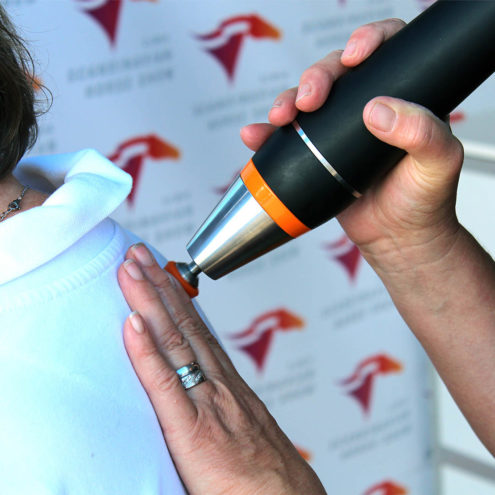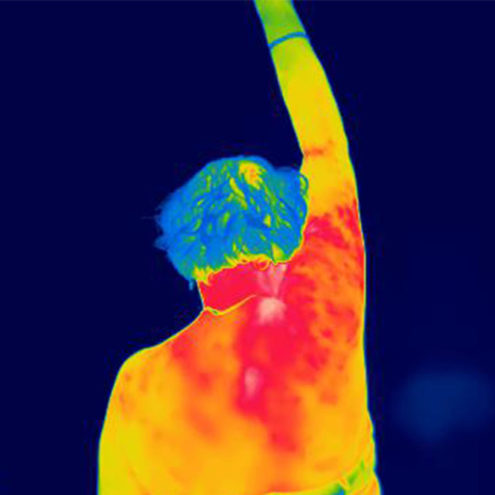Daytime Hand Numbness: Causes and Management

What can cause numbness in your hands during the day?
Description of daytime hand numbness and its common causes
Numbness in the hands during the day is not uncommon. It is characterized by a feeling of tingling, prickling or loss of sensation. This numbness can occur suddenly or gradually and can affect everyday activities. There are several common causes of this condition, which can range from temporary problems to chronic medical conditions.
Potential contributing factors that can lead to numbness
Impaired circulation
Reduced blood circulation is a common cause of numbness in the hands. When blood flow to the hands decreases, it can cause a feeling of tingling and numbness. This can happen for several reasons, including:
Sitting or standing in the same position for a long time: This can restrict blood flow and cause temporary numbness.
Tight clothing or jewelry: Tight clothing or jewelry can restrict blood flow to the hands.
Vascular diseases: Diseases that affect blood vessels, such as peripheral arterial disease (PAD), can also lead to reduced circulation and numbness.
Nerve compression
Another common cause of numbness in the hands is compression of the nerves that run through the wrist and arm. Some common conditions that cause nerve compression are:
Carpal tunnel syndrome: This condition occurs when the median nerve is compressed in the carpal tunnel, which can lead to numbness, tingling and weakness in the hand.
Ulnar tunnel syndrome: This condition occurs when the ulnar nerve is compressed at the elbow or wrist, which can lead to numbness in the little finger and ring finger.
Thoracic outlet syndrome: This condition involves compression of the nerves passing through the chest and can cause numbness and pain in the arms and hands.
Medical conditions
Certain medical conditions can also contribute to numbness in the hands. Some of the most common include:
Diabetes: High blood sugar can damage nerves and cause peripheral neuropathy, which can lead to numbness and tingling in the hands.
Rheumatoid arthritis: Inflammation of the joints can cause nerve compression and lead to numbness.
Thyroid disorders: Hypothyroidism can lead to fluid retention and swelling that presses on the nerves.
Vitamin deficiency: A lack of vitamin B12 can cause nerve damage and numbness.
Symptoms of daytime numbness in the hands
Feeling of tingling, prickling or numbness in your hands
One of the most obvious symptoms of numbness in the hands is a feeling of tingling or prickling. This can be described as the hand ‘going to sleep’ or a feeling of being pricked by needles. Numbness or loss of sensation can also occur, making it difficult to feel touch or temperature changes.
Weakness or decreased sensation in the fingers or palms of the hands
Numbness in the hands may also be accompanied by weakness or loss of sensation in the fingers or palms. This can make it difficult to grasp objects, perform fine motor tasks or even feel small objects. Sometimes this can lead to dropping things or having difficulty performing everyday activities such as writing or buttoning buttons.
Increased frequency of numbness during activity or specific positions
Numbness in the hands can often be aggravated by certain activities or positions. For example, long periods of typing on a keyboard, driving a car or holding a phone can cause or worsen numbness. Certain sleeping positions can also lead to hands being numb in the morning. This is often because these activities or positions cause compression of the nerves or reduce blood circulation to the hands.
Management of daytime hand numbness
Ergonomic adjustments to reduce pressure on nerve endings and improve blood circulation
Making ergonomic adjustments in the workplace and at home can help reduce pressure on nerves and improve blood circulation. Some tips include:
The design of the workstation: Make sure your workstation is designed to support a neutral wrist position. Use an ergonomic chair, keyboard and mouse to reduce strain on your hands and wrists.
Correct posture: Have good posture when sitting or standing, and avoid sitting with your legs crossed or holding your arms in a fixed position for long periods.
Regular breaks: Take regular breaks to stretch and move your hands and wrists. This can help improve blood circulation and reduce pressure on the nerves.
Stretching and strengthening exercises for hands and wrists
Performing regular stretching and strengthening exercises for the hands and wrists can help improve muscle strength and flexibility, which in turn can reduce numbness. Some examples of exercises include:
Wrist stretches: Stretch your wrist by gently bending your hand backwards using your other hand and hold the position for 15-30 seconds. Repeat several times a day.
Hand grips: Use a hand trainer or a soft ball to strengthen the grip. Squeeze and hold for 5-10 seconds, then release. Repeat 10-15 times per session.
Finger stretches: Spread your fingers out as much as possible and hold for a few seconds. Release and repeat several times a day.
Consultation with a doctor
If the numbness in your hands is persistent or worsens, it is important to consult a doctor to evaluate any underlying medical conditions and receive appropriate treatment. The doctor may recommend:
Diagnostic tests: Such as blood tests, neurological tests or imaging to identify the cause of the numbness.
Medical treatment: Prescribing medications to treat underlying conditions such as diabetes, rheumatoid arthritis or thyroid problems.
Physiotherapy: Referral to a physiotherapist for specialized exercises and treatments to reduce nerve compression and improve mobility.
How can we help you with your daytime hand numbness?
At the FasciaClinics, we specialize in seeing and treating the body from a holistic perspective. We perform fascia treatments, a highly effective wellness treatment that focuses on treating and maintaining the fascia in our body. The fascia is the network of connective tissue that binds and permeates everything in our body. All cells, tissues (even bone tissue), nerves, muscles and joints contain fascia. Treating the fascia and releasing tension and adhesions can thus play a crucial role in the treatment of hand numbness.
By addressing the health and function of the fascia, these treatments can help to reduce pressure on the nerves, improve circulation and thus relieve tingling in the hands. We also take and reduce pressure on the vertebrae to reduce nerve compression.
Managing hand tingling requires a comprehensive understanding of the underlying causes and a tailored treatment plan. At Fascia Clinics, we are committed to offering our clients a highly effective complement to their journey to better well-being.
If symptoms are severe or the cause of the tingling is not known, medical attention should be sought. Always consult a doctor before starting any wellness treatment.
Contact us today to book a consultation and get the help you need to manage your daytime hand numbness. We are here to support you and help you regain full function and comfort in your hands.
 Search
Search
































